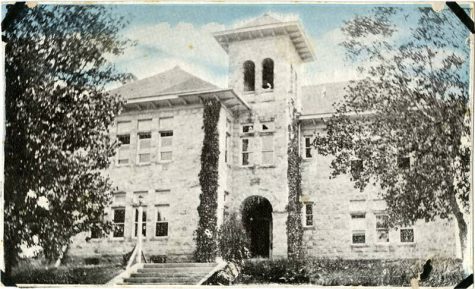Street Racing: A Brief History
Two cars, an open road, three… two… with the third honk of a horn a street race has broken out. Street racing can take on many forms, from a dig, a roll, or even time attacks (who can get through a windy canyon the fastest). But as long as it takes place on a street, it’s street racing.
Street racing had its spark with gasoline-powered vehicles in the 30’s. Imagine a dark night in the hills of Nebraska, the clang of glass bottles behind you as you race from point A to point B in a hopped-up Packard Deluxe Roadster. While exhilarating at the least, this activity was illegal for a variety of different reasons. Just as Nascar had its start here, so did the street racing we have come to think of today.
From the 20’s to the 50’s, cars began to make considerably more horsepower. In 1930, a For Model A had 24 horsepower. Compare that to the Ford flathead 239 that made 110 horsepower and it is easy to see why street racing was getting somewhat popular with car enthusiasts. People did not understand how death-defying street racing was in the 1950’s. There were practically no safety regulations. Seatbelts were not even invented until 1955. They were an option until 1963. Think about that; people going as fast as they can with no seatbelts and no airbags… recipe for disaster.
From the 60’s through the 80’s, the street racing community was completely underground. There were clubs; however, it was not exactly a massive “scene” as it is now. For the most part, street racing held less of a negative connotation. The 90’s is where it all changed. The 90’s is when America was introduced to our modern age “Tuner.”

Toyota Supra, taken Aug. 31, 2014. The style and lines in the cars of the 90’s are said to be timeless, this is an example of that.
Up until the 90’s, carburetors and displacement were the name of the game. However, with the introduction of electronic fuel injection and forced induction (turbochargers and superchargers), the invasion of “4bangers” and inline 6’s from Japan screamed their way into the world of underground street racing. Racer X is a true street racing story; the story that The Fast and the Furious is based on. This quote from Business Insider is a perfect example of the mindset people had in the 90’s; “But the new guys wouldn’t be caught dead driving the gaudy muscular beasts of yesteryear. Instead, they’re tricking out low-buck Japanese imports like Honda Civics and Acura Integras and tattooing them like skateboards with Neuspeed and Greddy car parts stickers.” The Legends of the car world still sought after today are from that era. The Toyota Supra, the Mazda RX7, Acura Integra Type R, Honda Civic Type R, Toyota Mr2, and the Nissan GTR to name a few. The 90’s represented a massive advance in technology, the cars of this era reflect that. And then came the 2000’s.
Most people’s idea of street racing comes from a certain series of movies first introduced in the 2000’s, 2002 to be exact. The Fast and the Furious. This movie influenced the street racing scene in a way no other media ever had. It pumped testosterone into its viewers, glamorizing the lifestyle and encouraging watchers to go out and try it. “Police in Los Angeles have had their hand’s full containing real-life street racers over the weekend on which new US chart-topper The Fast and the Furious opened to the public,” an article from The Guardian explained. The movie sparked a flame that was hard to control and after the 90’s, the law started to come down.
The stakes have been raised in recent years. Safety equipment has improved on modern cars; however, horsepower has too. Not too long ago 500 horsepower was an extremely competitive car. Now that there are so many road legal vehicles on the streets with four digits of power, 500 just won’t cut it anymore. This amount of power has claimed the lives of many. A study conducted in 2001 called The fast and the fatal: street racing fatal crashes in the United States found that over three years, “street racing was a factor reported in 399 motor vehicle crash fatalities.” The stakes have risen, some would say the power being pumped out of these cars has gone too far.
So, there you have it. A brief history of the danger and exhilaration that is street racing. Want to know what the police and insiders think? Stay tuned.

You want to talk about cars?!
Oh, you don't walk to talk about cars.
Let's talk about cars anyway.












